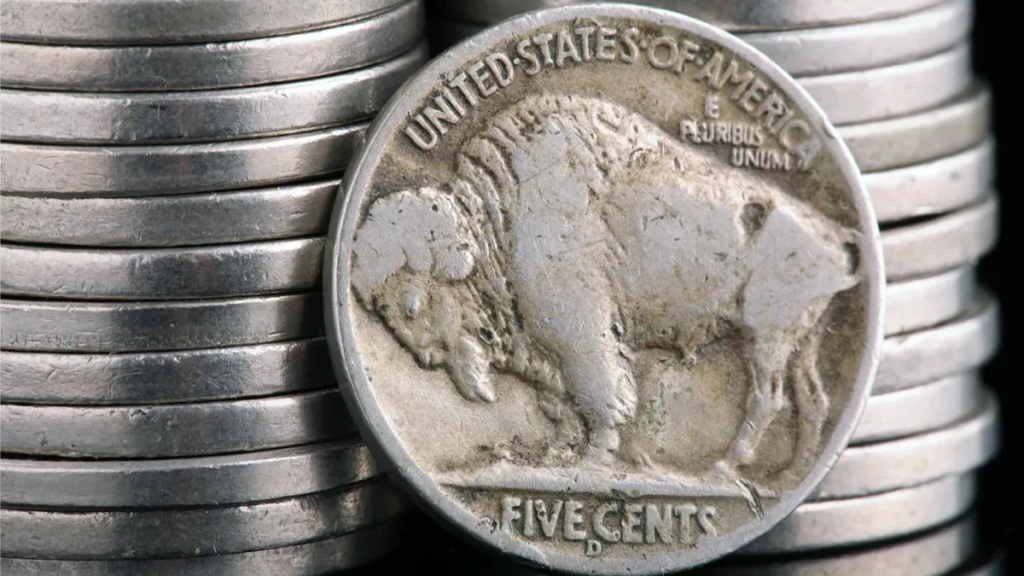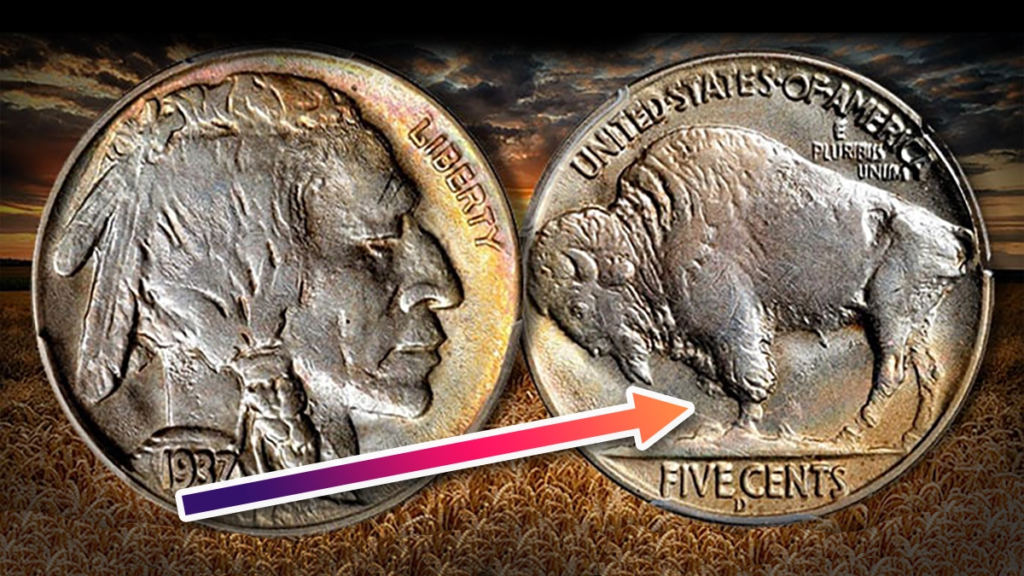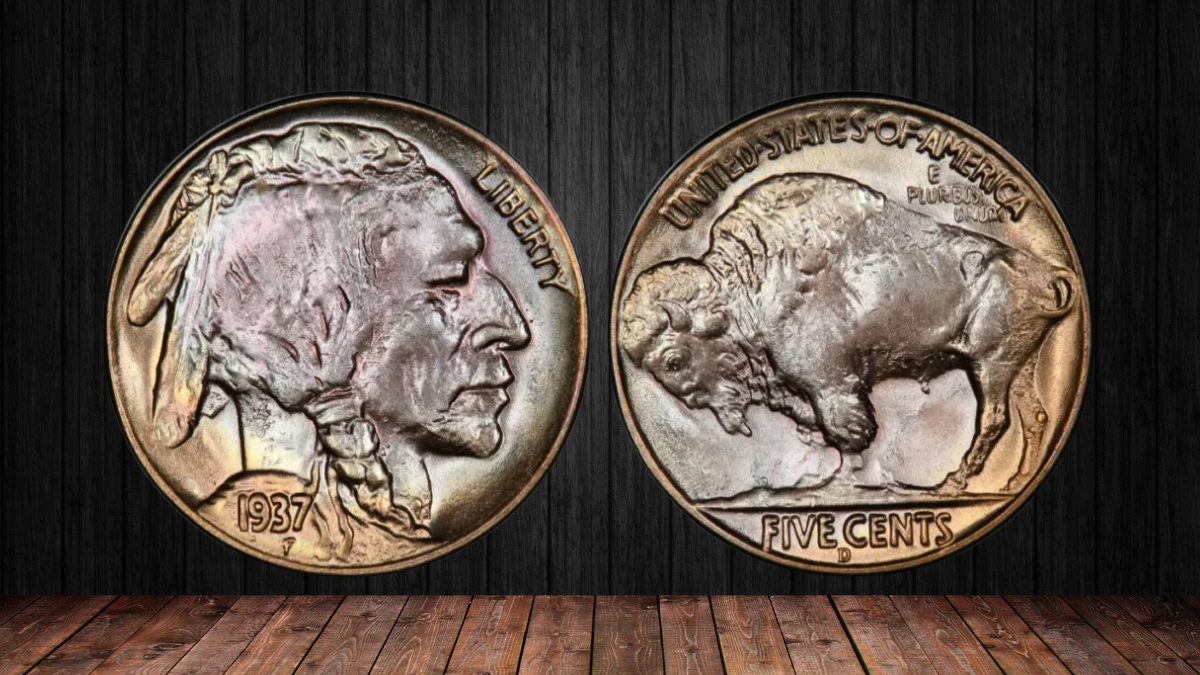Buffalo nickels from 1937 are common, but some can hold value beyond their face worth, especially for collectors. This coin’s worth comes from its metal composition, historical significance, and possible minting errors that make it unique.
What is the 1937 Buffalo Nickel Made Of?

The 1937 Buffalo Nickel, part of a design that began in 1913, is made of 75% copper and 25% nickel. The reverse side of this coin features a buffalo standing on a line, different from earlier versions where the buffalo was on raised ground.
The design on the front (obverse) showcases a Native American head, and the year of minting is engraved on the shoulder area, with the word “LIBERTY” next to the head.
Unlock Rare Coin Value: 7 Proven Strategies to Find Hidden Gems
Types of 1937 Buffalo Nickels
Several varieties of the 1937 Buffalo Nickel were minted, and their value can change based on where they were made and their condition.
| Variety | Mint Location | Mintage (Quantity Produced) |
|---|---|---|
| 1937 D Buffalo | Denver | 17,826,000 |
| 1937 P Buffalo | Philadelphia | 79,480,000 |
| 1937 S Buffalo | San Francisco | 5,635,000 |
| 1937 Proof Buffalo | Philadelphia | 5,769 |
The most common variety is the one from Philadelphia, while the San Francisco and Denver coins are more limited in number, making them more valuable to collectors in pristine conditions.
How Much Are 1937 Buffalo Nickels Worth Today?
The value of a 1937 Buffalo Nickel can range from $0.50 to $20 for coins in circulated condition. But uncirculated, pristine coins can be worth a lot more. For example:
- A perfect condition 1937 D nickel sold for $35,250 in 2015.
- A 1937 S nickel in top condition can fetch as much as $22,500 on the market.
Notable Errors in 1937 Buffalo Nickels

Some of the most valuable Buffalo nickels are those with errors. These errors can happen during the minting process and make the coins more desirable for collectors. Examples of common errors include:
- Doubled Die Error: This occurs when the design is imprinted more than once on the coin.
- Struck-Through Error: Caused when a foreign object is struck into the coin during minting.
- Repunched Error: When the mint mark is stamped more than once, resulting in overlapping impressions.
How Coins Are Graded
Coins, including the 1937 Buffalo nickel, are graded on the Sheldon Scale, which ranges from Poor (P-1) to Perfect Mint State (MS-70). Collectors and dealers use these grades to determine the value and condition of coins.
| Grade | Description |
|---|---|
| (P-1) Poor | The coin is very worn and possibly damaged, but identifiable. |
| (G-4) Good | Well-worn, with design elements faded or nearly erased. |
| (VF-20) Very Fine | Some wear, but the details and inscriptions are clear. |
| (MS-65) Mint State | The coin is in nearly perfect condition, with no signs of wear. |
Collectors should look for coins in the highest grades for the best value.
These 12 Rare Coins Are Extinct, But They’re Now Worth Thousands!
Conclusion
The 1937 Buffalo nickel holds significant value for collectors, depending on its condition and rarity. While circulated coins may only be worth a few dollars, uncirculated and error coins can fetch thousands.
Understanding the different varieties and errors, like doubled die or struck-through errors, can help you assess the potential worth of your nickel.
Whether you’re a casual collector or a numismatist, keeping an eye on these factors will guide you in evaluating your 1937 Buffalo nickel.
FAQs
What is a 1937 Buffalo nickel made of?
It is composed of 75% copper and 25% nickel.
How much is a 1937 Buffalo nickel worth?
Its value ranges from $0.50 to over $20,000, depending on the coin’s condition and rarity.
Are there error versions of the 1937 Buffalo nickel?
Yes, some errors like doubled die and repunched mintmarks increase the coin’s value.
Where were 1937 Buffalo nickels minted?
They were minted in Philadelphia (no mint mark), Denver (D), and San Francisco (S).
How is the value of a coin determined?
Coin value is based on its condition, rarity, and historical significance, often evaluated using the Sheldon Scale.

